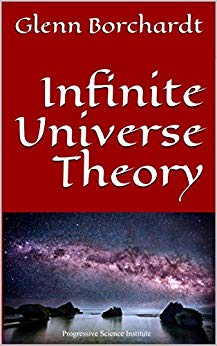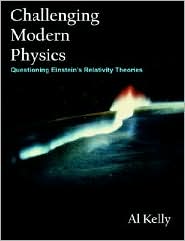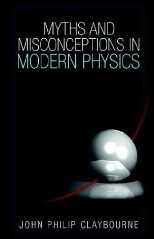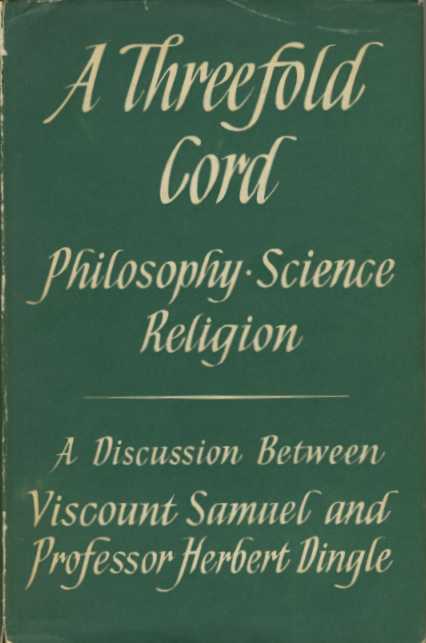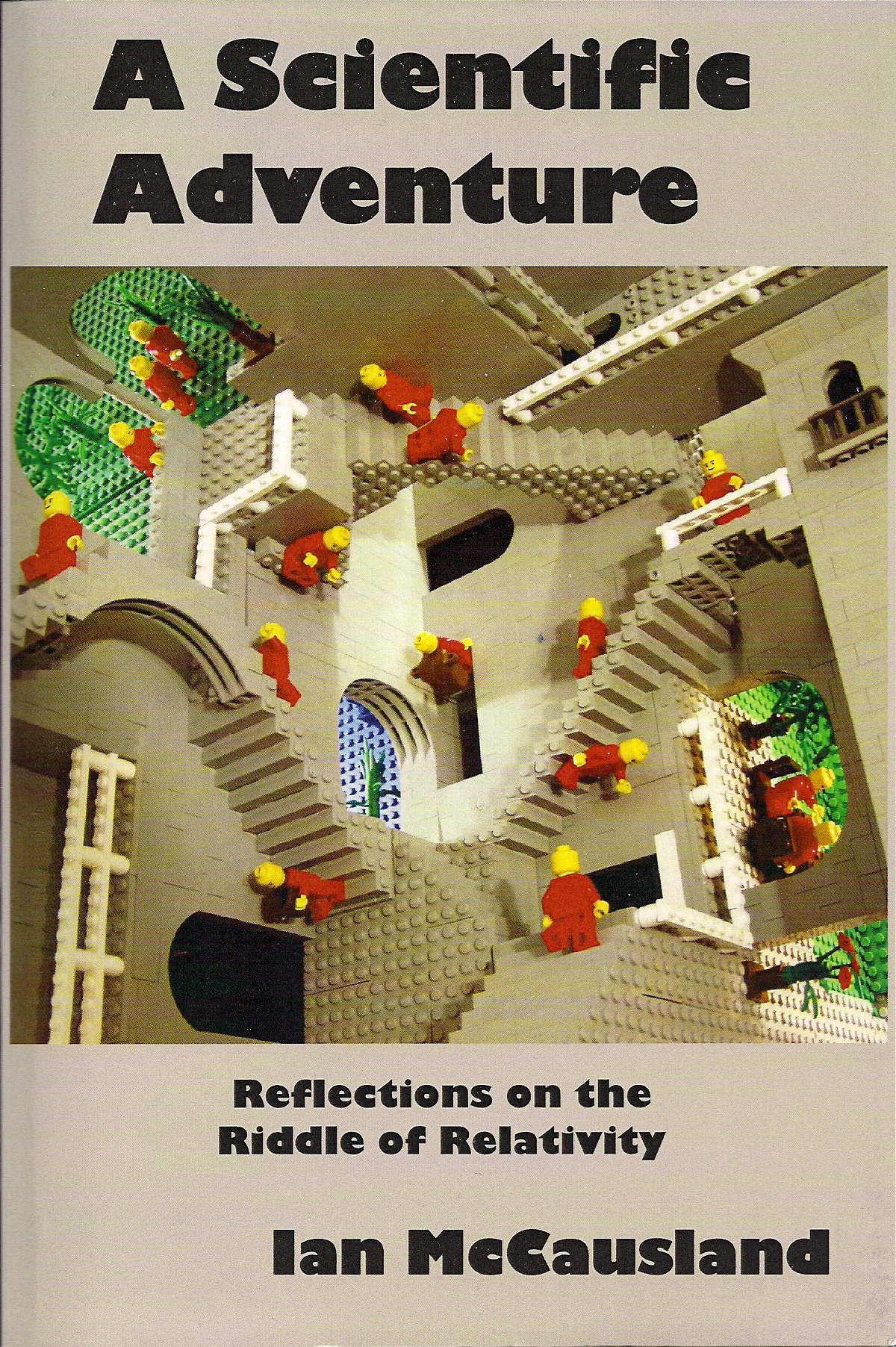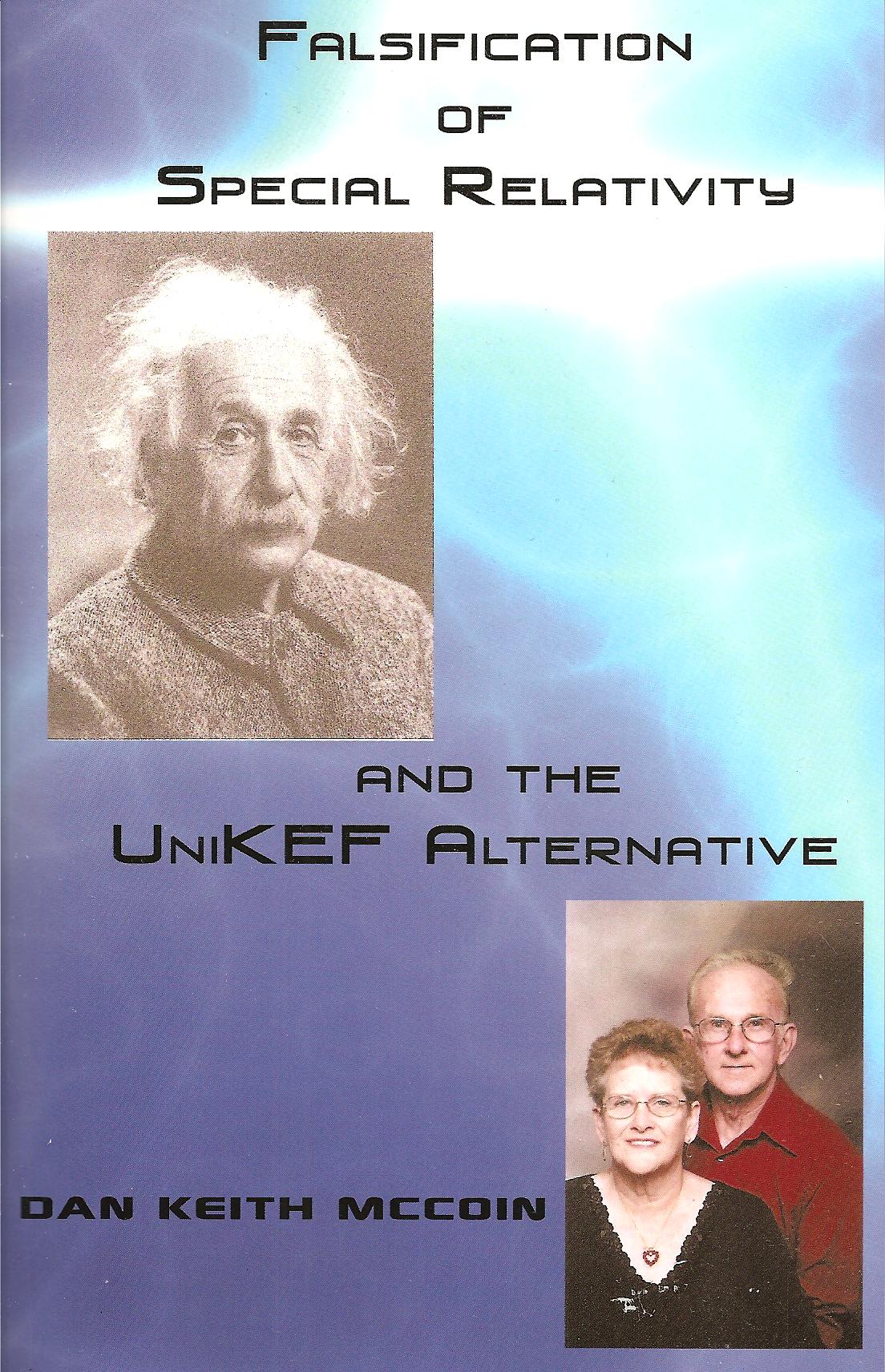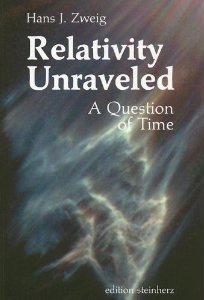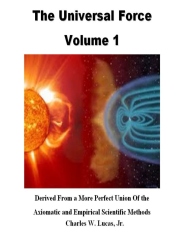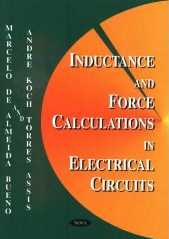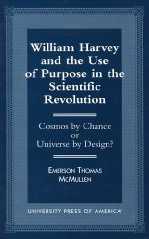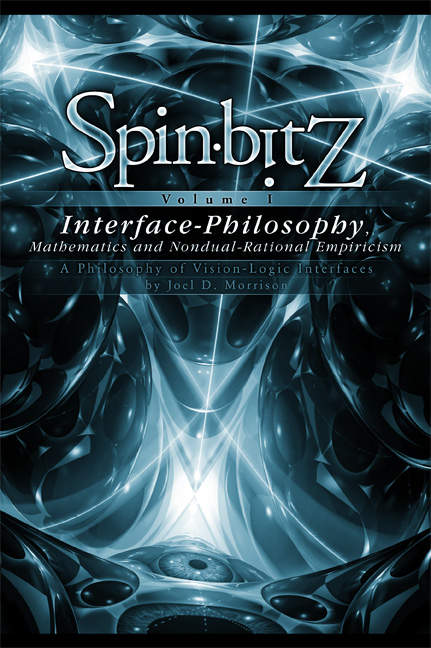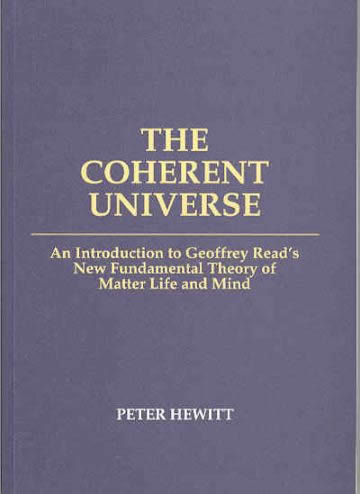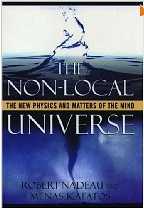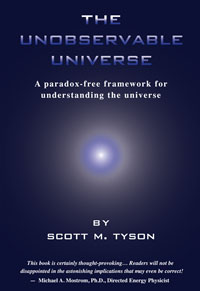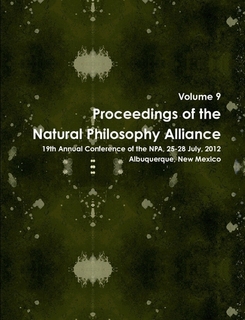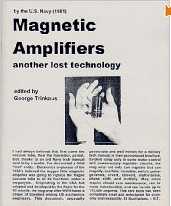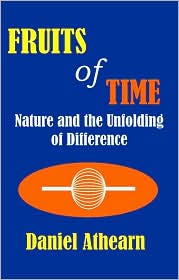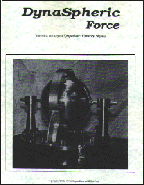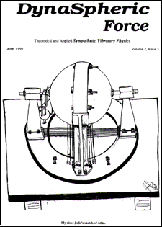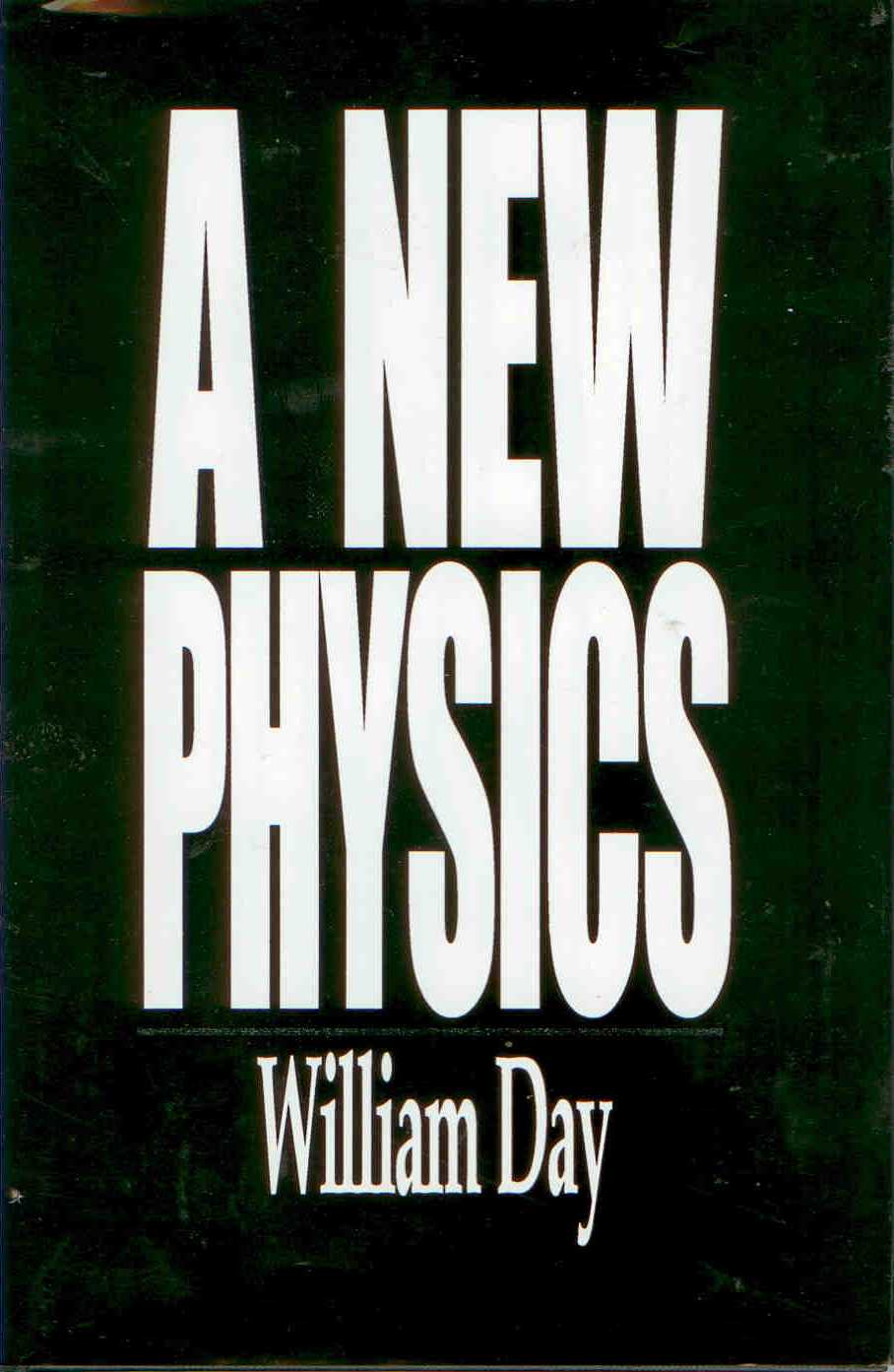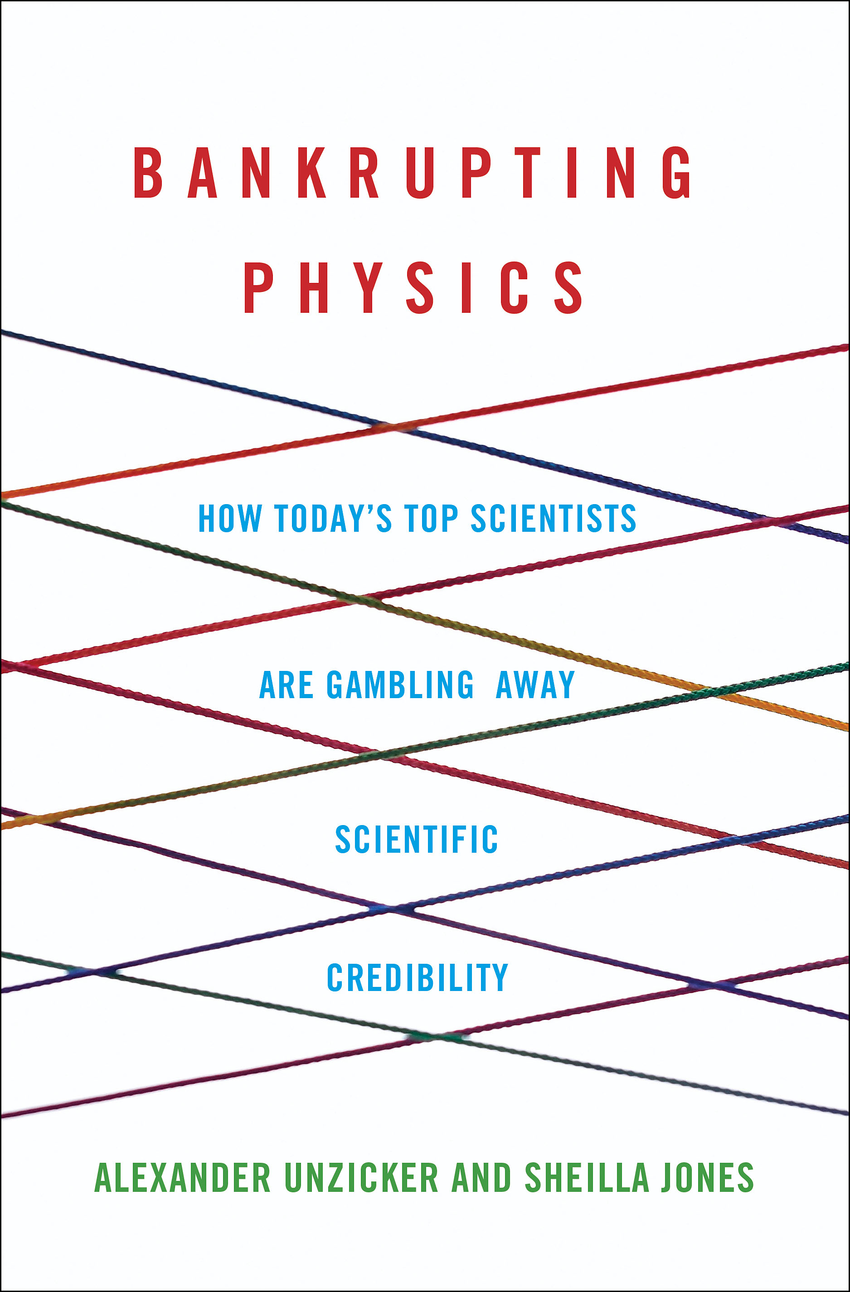
View count: 1
The recently celebrated discovery of the Higgs boson has captivated the public's imagination with the promise that it can explain the origins of everything in the universe. It's no wonder that the media refers to it grandly as the "God particle." Yet behind closed doors, physicists are admitting that there is much more to this story, and even years of gunning the Large Hadron Collider and herculean number crunching may still not lead to a deep understanding of the laws of nature. In this fascinating and eye-opening account, theoretical physicist Alexander Unzicker and science writer Sheilla Jones offer a polemic. They question whether the large-scale, multinational enterprises actually lead us to the promised land of understanding the universe. The two scientists take us on a tour of contemporary physics and show how a series of highly publicized theories met a dead end. Unzicker and Jones systematically unpack the recent hot theories such as "parallel universes," "string theory," and "inflationary cosmology," and provide an accessible explanation of each. They argue that physics has abandoned its evidence-based roots and shifted to untestable mathematical theories, and they issue a clarion call for the science to return to its experimental foundation.
Pages: 324
Publisher: Progressive Science Institute, Berkeley, CA
Year: 2017
Websites: www.scientificphilosophy.com/
Infinite Universe Theory presents the ultimate alternative to the Big Bang Theory and the common assumption that the universe had an origin. Author Glenn Borchardt starts with photos of the “elderly” galaxies at the observational edge of the universe. These contradict the current belief that the universe should have increasingly younger objects as we view greater distances. He restates the fundamental assumptions that must underlie the new paradigm. Notably, by assuming infinity he is able to adapt classical mechanics to “neomechanics” and its insistence that phenomena are strictly the result of matter in motion. He shows in detail how misinterpretations of relativity have aided current flights of fancy more in tune with religion than science.
Borchardt demonstrates why only Infinite Universe Theory can provide answers to questions untouched by currently regressive physics and cosmogony. His new modification of gravitation theory gets us closer to its physical cause without calling upon attraction or curved spacetime or “immaterial fields.”
This is the book for you if you have doubts about the universe exploding out of nothing and expanding in all directions at once, that the universe has more than three dimensions, or that light is a massless wave-particle that defies the Second Law of Thermodynamics. Borchardt has put forth a solid case for an Infinite Universe that extends in all directions and exists everywhere and for all time.
“What a great read! Thanks so much for a book full of great ideas. I love the Q&A format; it’s very satisfying to have good answers to clearly stated questions.” -Rick Dutkiewicz
“Truly brilliant.” -Jesse Witwer
“A radical, daring, and innovative demolition of regressive physics, from the creation of ‘something out of nothing’ to the ‘God Particle.’” -William Westmiller
"Glenn Borchardt's book uses the hammer of Infinity to explain and destroy the junk theories that plague 'Official' physics today. This is a book that should be used in college courses, to give students a basic understanding of how physics is done. Physics has 'gone off the rails' for a century and it is books like Borchardt's that will return physics from its current unscientific and anti-materialist base and back on to a scientific and materialist road." -Mike Gimbel
“What a fascinating read!” -Juan Calsiano
Pages: 320
Publisher: Brown Walker Press
Year: 2005
ISBN: 1581124376
ISBN: 978-1581124378
Newton's Laws held for 300 years until Einstein developed the 'special theory of relativity' in 1905. Experiments done since then show anomalies in that theory.
This book starts with a description of the special theory of relativity. It is shown that Einstein was not the first to derive the famous equation E = mc2, which has become synonymous with his name. Next, experimental evidence that cannot be explained by special relativity is given. In the light of this evidence, the two basic postulates of the special theory of relativity on the behaviour of light are shown to be untenable. A new theory (universal relativity) is developed, which conforms to the experimental evidence.
The movement of a conductor near a pole of a magnet and the movement of that pole near the conductor does not always give the same result. It has been claimed that this contradicts relativity theory. Experiments described in this book show that it is not special relativity but another basic law of physics that is contradicted - Faraday's Law.
The Big Bang theory of the beginning of the universe is questioned and an alternative proposed. The source of much of the mysterious missing 'dark matter' that has been sought for decades by astronomers is located. An explanation of the shapes of some galaxies is proffered.
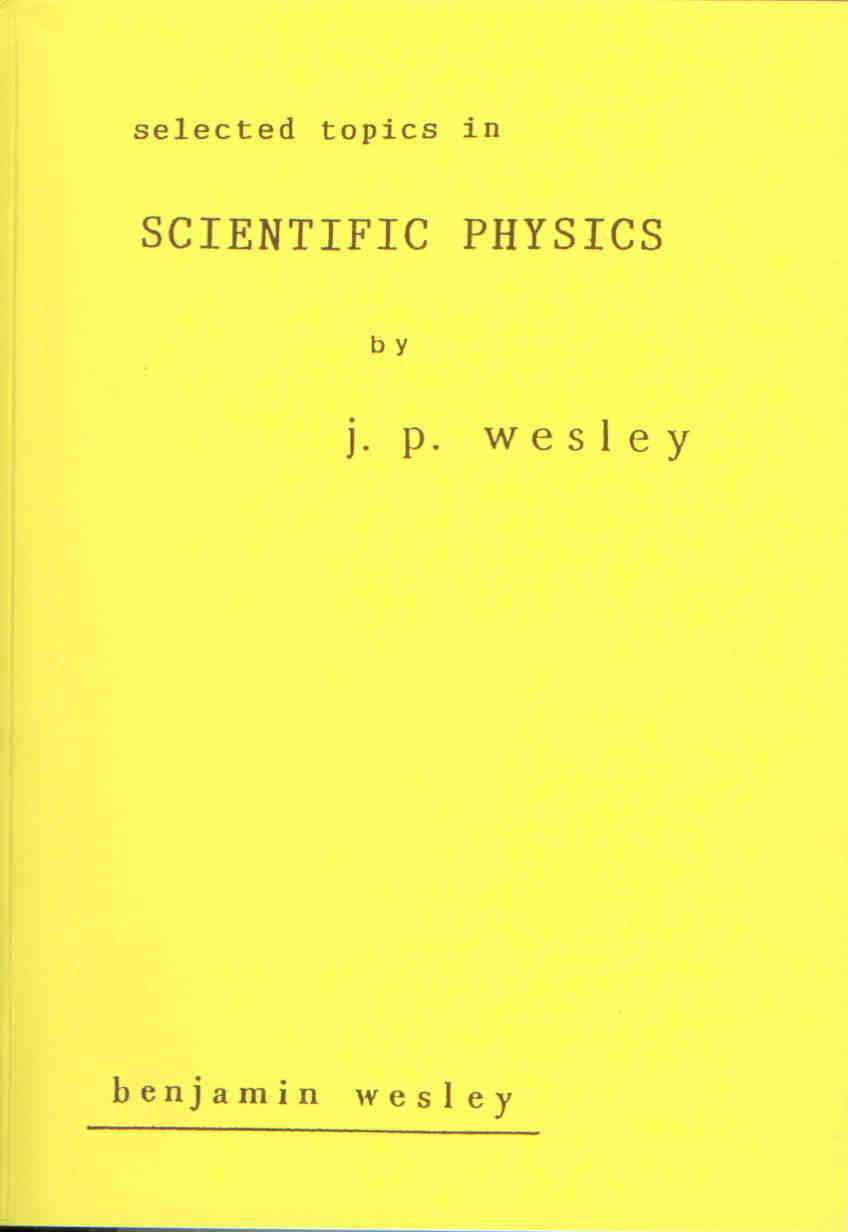
View count: 1
Scientific Physics is physics based upon ordinary empirical scientific principles. Traditional orthodox physics has become mired down in mystical ideas, anti-scientific principles, and denials of obvious experimental facts. The evidence reviewed in this book proves space-time is absolute ? no "special relativity" nonsense. A cosmology is presented for an eternal, infinite, uniform in-the-large, steady-state, nonexpanding universe that fits all of the facts ? no impossible "big bang", no "curved space", no "expanding universe", no "bounded universe", etc. The far-reaching consequences of mass-energy equivalence (known in the 1800?s) are explored, yielding neomechanics in absolute space-time, a new gravitational theory, etc. An electrodynamic field theory is presented that agrees with Ampere?s original force law, with Weber electrodynamics for slowly varying effects, and predicts longitudinal electrodynamic K waves (recently observed), yields the force that drives the Marinov motor and that explains the Aharonov-Bohm effect ? no error-ridden Maxwell theory, no Faraday law of electromagnetic induction, no absurd Biot-Savart law, etc. The conditions for creating thermodynamic order are presented, which indicate why low entropy life exists, why stars are born from high entropy gas and dust, why territorial behavior of all organisms and man, etc. It is shown how quantum particles move along discrete trajectories as explicit function of time to yield all observed wave behavior. The empirically correct Wesley wave, Y = sin [p?(r-vt)/h], for free particles is generalized to yield wave equations for bound particles ? no "wave-particle duality", no single particle interfering with itself, no single particle going through both slits to produce interference, no "uncertainty principle", no intrinsic "probability amplitudes", no superposition of physical states, no "complementarity", no astrological "nonlocality", no thoughts affecting experimental results, no "indistinguishable" particles, no "expectation values" as observables, no "operator approach", etc.
Book Review: Selected Topics in Scientific Physics by Dr. Thomas E. Phipps Jr.
Pages: 124
Publisher: Xlibris Corporation
Year: 2003
ISBN: 1413403921
ISBN: 978-1413403923
ISBN: 1413403913
ISBN: 978-1413403916
Erroneous conclusions and gaps in modern physical theory are revealed. Perceived conflicts between classical and quantum are eliminated, partly as a result of a new theory of electric fields. The new theory explains relativistic mass increase and mass decrement in the nucleus, identifying a supplementary term needed in Einstein's famous equation E = mc2. The theory also provides a logical explanation of electron diffraction. The book challenges concepts of particle / wave duality, provides an alternate explanation of nuclear forces and proves that all verified predictions of special relativity theory are a sole result of Einstein's relativistic mass increase theory.
Pages: 280
Publisher: George Allen and Unwin
Year: 1961
ISBN: B000FSRQQI
ISBN: B0006DB2YE
ISBN: B000ZN9TC2
Websites: en.wikipedia.org/wiki/Herbert_Dingle
This book originated in the belief that there is an urgent need at the present time for a greater association between philosophers and scientists and of both with religious people. The problem of bringing this association into being is approached from different angles by the two authors, who, while agreeing on the main thesis, differ on many details, and the discussion is largely concerned with an examination of the points of difference. It ranges over the significance of scientific concepts, such as ether, energy, space and time, the place of mathematics in science and of linguistics in philosophy, the nature of scientific thought in relation to the universe as a whole, problems of life, mind, ethics and theology. It also raises questions of importance concerning the present attitudes of organizations dealing with these matters towards their respective concerns.
In the course of the discussion, Dingle described how a scientific paper critical of special relativity was rejected by various journals. Part of the paper is reproduced as Appendix II of the book, and is a very clear description of his "Proof that Einstein?s Special Theory cannot correspond with fact."
One of Dingle's criticisms of the special theory is presented in an appendix, with a commentary showing that a published attempt to refute the argument by Professor Good was not sound. Other appendices present some of my published papers on the topics discussed in the book.
Pages: 127
Publisher: California Publishing Co.
Year: 2005
ISBN: 3980737845
ISBN: 978-3980737845
Websites: www.aquestionoftime.com/
Einstein?s Special Relativity Theory (SRT) attempts to solve the problem, but it is invalid, as can be shown using several distinct approaches: (1) through a logical analysis of the important concepts and thought experiments, (2) through recently available empirical results in astronomy, and (3) through a physical/ mathematical analysis of the foundation of SRT...
Pages: 204
Publisher: CreateSpace Independent Publishing Platform
Year: 2013
ISBN: 1482328941
ISBN: 978-1482328943
Dr. Lucas has derived an improved version of the electrodynamic force by using a complete set of the empirical laws of electrodynamics as the postulates for the axiomatic method. He has shown that the effects of Special Relativity are due to electrical feedback effects on finite size charge structures. Also he has shown that quantum effects such as the photoelectric effect and black body radiation are due to resonant effects in finite-size charge structures consisting of closed charge loops.
The improved electrodynamic force law derived by Dr. Lucas contains acceleration a terms for radiation and da/dt terms for radiation reaction. From this improved electrodynamic force law he has derived improved versions of the force of gravity and inertia which explain many previously unexplained phenomena such as the quantization of gravity as identified by Stanley Dermott's modern version of Bode's Law and the unusual gyroscope experiments of the British engineer Eric Laithwaite.
Dr. Lucas has used this improved electrodynamic force to create new models of elementary particles, atoms, nuclei and molecules which are simpler and explain more data more accurately than previous models.
Dr. Lucas has identified a peculiar symmetry in the improved electrodynamic force law which is a combination of spherical and chiral symmetry. He shows that this symmetry appears in all elementary particles, atoms, nuclei, molecules, crystals, plant leaves, plant flowers, plant seed heads, the orbits of planets and moons in our solar system, the structure of our Milky Way galaxy, and the structure of the whole universe about its center.
All of these things lead Dr. Lucas to declare this this improved version of electrodynamics is the true universal force.
Dr. Lucas has noted that such a universal force will shape the structure of the cells in the brain leaving its fingerprint in the structures of linguistics, sociology, psychology, mathematics, and architecture. Many investigators have won Nobel Prizes for showing this structure. Finally Dr. Lucas has shown a relationship between the universal force and God as revealed in the Jewish, Christian and Islamic religions.
Pages: 44
Publisher: Cortney Publications
Year: 1981
ISBN: 090437811X
ISBN: 978-0904378115
Pages: 135
Publisher: Nova Science Publishers
Year: 2001
ISBN: 1560729171
ISBN: 978-1560729174
Websites: www.ifi.unicamp.br/~assis https://www.novapublishers.com/catalog/index.php
Pages: 280
Publisher: University Press of America
Year: 1998
ISBN: 0761809589
ISBN: 978-0761809586
Websites: class.georgiasouthern.edu/history/facultydir/mcmullen.htm personal.georgiasouthern.edu/~etmcmull/
Pages: 207
Publisher: Joel D. Morrison
Year: 2007
Websites: www.spinbitz.net
Download and read it now
SpinbitZ is a playful, whirling, churning, folding and unfolding set of concepts for the illumination and integration of abstract philosophical ideas, through the integrated use of the imagination and its percepts. SpinbitZ constructs a set of philosophical "graphical user-interfaces" at the vision-logic level of cognition. It is thus a philosophy of vision-logic interfaces, employing the "triune interfaces," or "cultivated thirds" hidden within the polarities of every duality, dichotomy, controversy and paradox to build a consistent system for the effective understanding and resolution of their key esoteric truths, rather than for their dualistic and reactionary refutation. In using these interfaces to trace a nondual thread of rationality to its historical roots, it is discovered that only the dualistic, exoteric (or commonly understood) forms of rationality begin with the Greek trinity: Socrates, Plato and Aristotle. By reconnecting to the earlier nondual truths of Heraclitus and Parmenides, the conceptual axis-mundi itself (what Lao Tzu called "the door to all wonders") is found spinning at the core of Zeno's paradox, and thus at the core of nondual rationality. Through a fusion of Art, Science, Mathematics and Philosophy?and with the help of nearly a hundred detailed diagrams and illustrations?this embryogenesis of rationality is traced as it reconnects to the alternative lineage of philosophy uncovered by Deleuze, with a nondual fusion of the systems of Spinoza and Leibniz.
In esoteric Theosophy it is said that in the "shock" of the interface between Spinoza and Leibniz "the essence and Spirit of esoteric philosophy would be made to appear." Unfolding through these vision-logic interfaces, this Interface Philosophy finally appears to reconcile many of the dualities plaguing the history of exoteric rationality. In its nondual interface with empiricism and Integral theory, for example, a detailed sketch of an Interface Epistemology is unfolded. Operating at the crossroads of the ontic-epistemic (reality vs. knowledge) and subject-object polarities, the evolutionary symbiogenesis of the exoteric dichotomies at the foundations of human knowledge is examined?illuminating and reconciling the "ontic-shadow" of post-modernity.
The process of reanimating these hidden nondual truths of rationality demonstrates that mathematics itself mirrors this holarchic structure implicit in the embryogenesis of the concept. This is because mathematics, as the art and science of pure relation, employs the most rarefied and abstract form of the concept, e.g. numbers and operations. Unfolding in layer upon layer, this Interface Mathematics transitions from the "oppositional forces" of dualism, ultimately again to the "intensive," integral or "second-tier" truths, and to the originary axis-mundi of the nondual. In making mathematics visible, visceral and understandable?a Vision-Logic Coordinate System is constructed revealing two fundamental axes of conceptual thought (one of which is this axis mundi or immanent/transcendent axis). Spinoza's "three infinities" are then shown as the triune interface, or cultivating third between these binary axes, for illuminating and reconciling the many paradoxes and controversies of infinity?e.g. Zeno's, Galileo's and Cantor's?as they wind their way into the truths of our modern mathematics of the continuum and set-theory. - Back cover.
Pages: 393
Publisher: Linden House
Year: 2003
ISBN: 0954398807
ISBN: 978-0954398804
Websites: www.geoffreyread.com
The most radical feature of the new theory is a new physics based on hidden variables. In the 20th century, the most celebrated proponent of hidden variable theory was the physicist David Bohm. Einstein, de Broglie, Dirac, and Schr?dinger were also convinced that a deterministic substratum underlies the merely probabilistic characterisation of reality to which orthodox quantum theory is restricted.
One implication of Geoffrey Read's new physics is that the past persists throughout Nature. This leads to a new biology grounded on a force, precisely relatable to physical forces, issuing from past experience. In this theory, brains do not contain memories but directly access the persisting past.
Read's theory also encompasses parapsychology, survival of death, and reincarnation. The Coherent Universe is essential reading for those interested in new world-views, and for those concerned with emergent holistic, ecological, and spiritual thinking. It will have special relevance for those interested in the metaphysical foundations of science, the brain/mind relationship, and the origins of consciousness. - Peter Hewitt
" ... a most impressive intellectual achievement. Despite the comparatively short length of your work, you have managed to convince me that, in principle, it covers EVERYTHING. It is a GUTE - a GRAND UNIFIED THEORY of EVERYTHING" - Professor Christopher Macann
"Readers of Whitehead, Bergson, Bohm, and Sheldrake will warm to the project ... The Coherent Universe usefully might serve as a textbook for a variety of university courses ... should invite spirited discussion for years to come." - Professor Mark Woodhouse
Pages: 256
Publisher: Oxford University Press
Year: 2001
ISBN: 0195144082
ISBN: 978-0195144086
The latest of many attempts to link subatomic physics to broader human concerns, this brisk, uneven volume splits neatly in two: the first half explains key ideas in quantum physics, and the second makes grand claims about their worth for other fields. Classical physics rules out "action at a distance." (You can't move a billiard ball unless something--a pool cue, an air jet, lightning--contacts it.) But quantum physics permits "non-local" action, and recent experiments prove it: do certain things to one photon, and you'll affect another faster than light can travel between the two. Hence, "all of physical reality is a single quantum system that responds together to further interactions," say the authors. Nadeau (a historian of science) and Kafatos (a physicist), both professors at George Mason University, move from these cogent, compact exegeses of quantum non-locality to its purported meanings for biology, philosophy and even economics. Non-locality, Nadeau and Kafatos contend--with its attendant "complementarity" between parts and wholes--helps explain the origins of life, speaks to the evolution of consciousness, solves the dilemmas of recent social and literary thought and bridges for good the divides between mind and matter, arts and sciences. The authors bring up, but don't always keep in mind, the difference between explanation and analogy. Some arguments "prove" truths most potential readers already know (e.g., we ought to work to save the rain forests); others (about evolution and about French theory) seem facile. Nonetheless, Nadeau and Kafatos supply plenty of food for thought: the apparently recondite concept of non-locality, they suggest, has consequences everywhere. (Jan.) - Publisher's Weekle, Amazon
Non-locality and quantum entanglement are neither delicate nor rare events. Quantum non-locality is not rare and does not disappear. The Universe operates according to the principles of complementarity at all scales - Kafatos and Nadeau established the particulars of this verity with extraordinary adroitness in their watershed book "The Conscious Universe." The concept of non-locality as an implicate attribute of the material world is borne out by three pieces of impeccably documented science which are only now becoming generally known. Nicolas Gisin and his colleagues at CERN proved that Bell's predictions regarding non-locality were precisely correct. The positron-electron pairs they separated with a Potassium Niobate crystal and shunted through 15 kilometers of fiber optic cable, automatically re-oriented spin and polarity instantaneously to maintain net-spin values of zero when one of the particle-pair was accelerated through an electromagnetic field, to seven decimal points, in repeated trials. The effective rate at which the information transfer occurred between the particles is calculated to be at least 10 to the nine times faster than the speed of light. Second, Vladimir Poponin has demonstrated in his work with the DNA Phantom Effect that every molecule of DNA exerts a non-local field effect on the material locale surrounding it, which persists for up to 30 days after the DNA molecule source has been removed. The importance of Poponin's work is that it proves unequivocally that among living organisms, non-locality operates simultaneously with chemo-synaptic neuronal processes at all scales and in all living things. Finally, Donald Eigler's work at IBM's Almaden Lab's proves that non-local holographic field effects operate in all things as an intrinsic attribute of matter at atomic and sub-atomic scales, regardless of whether the materials are organic or not. In "The Non-Local Universe," Kafatos has simply opened the lid to this Pandora's box by providing an epistemological model which is carefully thought out, clearly articulated and reasonably constructed. His model is absolutely right on the mark and deserves to be read by anyone who is willing to look at this aggregation of unimpeachable evidence with clear scientific detachment. - David G. Yurth, Amazon
Tapping nearly three millennia of scientific philosophy and drawing upon his three decades as a prolific researcher, brilliant scientist and inspiring writer, Tyson artfully deconstructs key misunderstandings that modern science inadvertently continues to embrace ? unraveling the inconsistencies and paradoxes emerging from contemporary science and science philosophy, dissecting complex principles and debunking long-held premises with illustrative examples to expose vital new insights. His provocative theories, supported with pragmatic anecdotes and symbolic metaphors, translate quantum physics into a master blueprint for all cosmology readers to examine, explore and contemplate.
Tyson effectively illustrates the meaning of perceptions in a way that will prompt scientists to fundamentally rethink preconceived notions and consider new possibilities. He guides readers in a bold, new direction that provides a coherent framework in which they can truly understand the universe and the underlying Theory of Everything. Informative and illuminating, this groundbreaking book's lively style provides an enlightening and entertaining page-turner, laced with a brilliant combination of compelling theory, solid research, simple analogy, contagious enthusiasm and enough humor to break a smile on the faces of even the most serious cosmologists. Tyson propels readers toward a new state of thinking, with a greater awareness and understanding of the mysteries of the universe that more accurately reflects its truths and realities. As a benchmark for cosmology, The Unobservable Universe will forever change the way we look at our world.
Though the main interest of the NPA is in challenging orthodoxy in the sciences, it will also feature papers defending such orthodoxy. Our ultimate propose is to enable participants to articulate their own understanding of the truth. All papers are reviewed by society officers, and sometimes by other members, before presentation in conferences and they are edit, sometimes very significantly prior to publication in the Proceedings of the NPA.
View count: 1
When we speak of man, we have a conception of humanity as a whole, and before applying scientific methods to the investigation of his movement, we must accept this as a physical fact. But can any one doubt to-day that all the millions of individuals and all innumerable types and characters constitute an entirety, a unit? Though free to think and act, we are held together, like the stars in the firmament; with ties inseparable. These ties we cannot see, but we can feel them. I cut myself in the finger, and it pains me: this finger is a part of me. I see a friend hurt, and it hurts me, too: my friend and I are one. And now I see stricken down an enemy, a lump of matter which, of all the lumps of matter in the universe, I care least for, and still it grieves me. Does this not prove that each of us is only a part of a whole?
Introduction
Of all the endless variety of phenomena which nature presents to our senses, there is none that fills our minds with greater wonder than that inconceivably complex movement which, in its entirety, we designate as human life. Its mysterious origin is veiled in the forever impenetrable mist of the past, its character is rendered incomprehensible by its infinite intricacy, and its destination is hidden in the unfathomable depths of the future. Whence does it come? What is it? Whither does it tend? are the great questions which the sages of all times have endeavored to answer.
Modern science says: The sun is the past, the earth is the present, the moon is the future. From an incandescent mass we have originated, and into frozen mass we shall turn. Merciless is the law of nature, and rapidly and irresistibly we are drawn to our doom. Lord Kelvin, in his profound meditations, allows us only a short span of life, something like six million years, after which time the sun?s bright light will have ceased to shine, and its life-giving heat will be a lump of ice, hurrying on through the eternal night. But so not let us despair. There will still be left on it a glimmering spark of life, and there will be a chance to kindle a new fire on some distant star. This wonderful possibility seems, indeed, to exist, judging from Professor Dewar's beautiful experiments with liquid air, which show that germs of organic life are not destroyed by cold, no matter how intense; consequently they may be transmitted through the interstellar space. Meanwhile the cheering lights of science and art, ever increasing in intensity, illuminate our path, and the marvels they disclose, and the enjoyments they offer, make us measurably forgetful of the gloomy future.
Pages: 24
Publisher: High Voltage Press
Year: 2000
ISBN: 0970961855
ISBN: 978-0970961853
Pages: 156
Publisher: Universal Publishers
Year: 2003
ISBN: 1581125658
ISBN: 978-1581125658
This book argues that physics is destined to enter a new era marked by an enlarged conception of physical knowledge. This is not a matter of future discoveries, but has to do with how scientific thought responds over time to what is known today. In the new era a genuinely explanatory dimension is restored to physical science which in the current era of thought is quietly abandoned as archaic.
The current view is that for a certain class of phenomena, physical explanations in the sense of descriptions of underlying causal processes are no longer possible. It is assumed that the general demise of classical materialistic causal models (such as the theory of ether as an all-pervading material medium of light propagation) consigns this kind of theorizing to history. This book fully accepts the breakdown of classical causal models, but not the inference that causal explanation itself is outmoded. Instead, it claims that the demise of classical assumptions opens the door on a prospect of thorough causal-physical intelligibility such as was never foreseeable within the classical worldview. Written with the inquisitive and critically- minded layperson in mind, the book describes findings across the major facets of contemporary physics as all pointing to the same conclusion about the nature of physical reality.Pages: 208
Publisher: Foundation for New Directions
Year: 2000
ISBN: 096254552X
ISBN: 978-0962545528
Websites: www.non-newtonphysics.com www.fnd.org/pgs/physics/holphy.htm
Motion is not what we think it is!
Those who explore the world of science know that the whole enterprise has but one permanent aspect: like it or not, what we know to be true is always changing. This is, of course, disconcerting to those who are emotionally attached to the explanations of nature they have learned in the past. Real progress in any kind of inquiry is always hindered by what we already think we know and, perhaps more importantly, our experiences that are shaped by this knowing.
Those who explore the worlds of bodywork and movement therapies are also familiar with uncertainty--when you have achieved some conviction about how the human body really works, there is a big surprise in store for you, often with your next client.
A New Physics is written by a chemist, William Day, and is published by a pioneer in the exploration of somatics, Marvin Solit. The reviewer attaches importance to this collaboration because of a belief that physics and the other sciences have suffered greatly from being detached from the wisdom of the living body. - From Summary by Jim Oschman (http://www.fnd.org/pgs/physics/newphysics_review.htm)
By Hal Fox:
The day this book was received in the mail, I had been having a vigorous (but friendly) discussion with Dr. S-X Jin. We were discussing the aether as a vast expanse of substance (not matter) that has enormous energy. I made the statement, ?One must keep in mind that all experiments are embedded in this highly-energetic medium.? Dr. Jin observed, ?With that concept, you can explain anything.? Exactly! However, the explanations must be based on logic, the scientific method, and not just supposition.
It was a pleasant surprise to find that Dr. William Day has, as a fundamental part of the New Physics, a universal ?medium? (which is a better name than aether) in which matter is embedded. Day describes how it has been known for over a hundred years that light waves must have an incredibly cohesive (rigid) medium to be able to transmit light waves at 186,000 miles per second. How matter can exist, move, and demonstrate its properties in such a medium is addressed in an astonishingly simple way: ?Matter is disengaged from the medium.? Although light can be emitted by matter and travel through the medium and strike or affect other matter; light, but not matter, can travel through the medium at the speed of light.
Here is a simple experiment. Fasten one end of an elastic material, pull it out a specific distance. Pluck the elastic and note the frequency of vibration. Now using half of the elastic material, stretch it out to the same length as before. Note that when it is plucked the vibration is much higher. That is just a simple analogy that for a medium to allow light to travel so fast, it must be more rigid (more cohesive) than steel. The nature of the disengaged (from matter) medium is its high rigidity and its ability to carry light waves at such high velocities.
The first person I have known to describe atomic electrons as an orbit shell was Dr. Randell Mills in his book, The Grand Unified Theory of Classical Quantum Mechanics, (?1996, published by Blacklight Power, ISBN 0-9635171-2-0). Dr. Day uses a similar model for electron shells around atomic nuclei and makes some interesting calculations to show how the shells are ordered. To me the orbit shell is a much improved model as compared to the concept of a small particle swirling about the nucleus like the moon around the earth.
Another novel concept Day uses in his model of motion, matter, and energy is the predominant place for motion. He explains that motion and the structure of matter are inseparable. This is a powerful concept. For those of us who have been schooled in classical physics, this concept requires some explaining (which Day does most adequately).
Another powerful concept stems from using a minimum number of discrete particles to explain the composition of all matter. A surprising statement is that ?Nature has no forces.? For example, if matter is imbedded in the medium, Day can make the following statement: ?It takes no force for a body to move spontaneously in response to its environment. The nucleus influences the course of its satellites, not by forcing their motion, but by shaping the environment which guides them.? Dr. Day describes how this concept can account for gravity from small to large masses and for the orbiting that occurs in some large body systems.
Day makes the following statement (page 25): ?We need to change the principles upon which the physics is based. The physics of matter and space is different from the physics of motion devised by Newton and Einstein. Dynamics needs to be relegated to its role of measuring the motion of bodies in Newtonian space and a new physics be use to describe the nature of matter.?
Dr. Day has carefully analyzed some of the dogma of physics. For example, the concept of mass being able to increase with velocity is outside of our range of experience. Day states, ??physics does not provide an explanation for mass as we experience it. To suggest that it changes with velocity, therefore, is a detached hypothesis that has to be accepted on faith.?
From this reviewer?s fifty years of trying to comprehend the physical nature of the universe, one major concept has emerged: Too much of modern physics is dogma and must be accepted on faith. The new physics as espoused by William Day is surprisingly free of dogma. However, there are concepts that are so new and, therefore, lacking in experimental proof, that the reader must label these concepts as a part of a developing model subject to experimental challenges.
The historic work by Michelson in setting up experiments to determine the effect on transmitted light by the earth?s rotation through the aether is only half taught in many of our institutions of learning. The work by Michelson and Morley (in 1887), which had negligible results, is frequently cited and strongly used to support the concept that there is no aether. What the experiment actually proved was that the experimental arrangement could not measure the influence of the earth?s motion with respect to the luminiferous aether. Michelson and Gale (in 1925) reported on an improved experiment designed to test: ?Theory of the effect of the rotation of the earth on the velocity of light as derived on the hypothesis of a fixed ether.? The results of this experiment in which ??two hundred and sixty determinations?? were made were positive.
The observed results were 0.230 +/- 0.005 (fringes) and the calculated results were 0.236 +/- 0.002 fringes. An amazingly close agreement between observations and theoretical prediction. Dr. William Day reprints the Michelson-Gale report in an Appendix to his book for which this reviewer applauds the author! Ask yourself the question, ?Why do the scientific professors teach the negative results of the early Michelson-Morley experiment and ignore the extensive data and high accuracy of the Michelson-Gale report?? You will probably consider the same explanation as this reviewer and, I believe, Dr. William Day has reached. The Michelson-Gale data did not fit the currently-accepted model of physics, therefore, the data was ignored and, unfortunately, still is. Dogma is more important than facts in some cases. Fortunately, Day?s model of Physics is free of dogma and explains many of the unexplained experimental observations that are unexplained by current physics.
Dr. William Day has spent well over a decade in publishing his four books as he has developed A New Physics. (Bridge From Nowhere, 1989; Bridge From Nowhere II, 1996; and Holistic Physics, 1998). This book, A New Physics, is highly recommended. It should be made ?must read? for every college freshman before he or she takes their first course in college physics. Then it should be reread after they take college physics. This reviewer believes that in this book lies the foundation (but not all of the answers) for a fundamental improvement in our model of physical reality.
